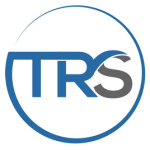Shifting Dynamics in the Trade Workforce and the Rise of Permanent Blue-Collar Jobs
Dive into the evolving landscape of the trade workforce with Tavis and Anthea from TRS Resourcing in their latest podcast. Explore why there’s a significant shift from contract to permanent blue-collar roles, the driving factors behind this change, and how it’s reshaping industry standards. From increased job security to addressing the skilled worker shortage, discover…
Dive into the evolving landscape of the trade workforce with Tavis and Anthea from TRS Resourcing in their latest podcast. Explore why there’s a significant shift from contract to permanent blue-collar roles, the driving factors behind this change, and how it’s reshaping industry standards.
From increased job security to addressing the skilled worker shortage, discover the critical insights and future implications for both employers and employees. Don’t miss expert analysis and real-world examples highlighting the transformation in blue-collar trades. Watch now to understand the new era of employment in the trade industry!
The trade workforce is undergoing significant transformations, particularly in blue-collar trades. As business realities and worker expectations evolve, we’re witnessing a noticeable shift towards permanent placements in industries traditionally dominated by contract roles. This shift reflects broader trends within the labour market and has implications for employers and employees.
The Current State of the Trade Workforce
In discussions, during a recent podcast by James at Purpose Productions hosted by Tavis and Anthea from TRS Resourcing, the topic of the trade workforce and the evolving landscape of blue-collar jobs took our podcast off to a good start. Anthea, often called the “boss lady,” has observed a considerable increase in the demand for permanent roles over contract positions. This trend is a minor fluctuation and a significant shift that underscores a changing attitude towards employment in blue collar trades.
Why the Shift to Permanent Blue Collar Jobs?
There is no doubt that multiple factors are driving the increasing preference towards permanent positions in the trade workforce. One primary reason is the desire for job security. In uncertain economic times, the stability offered by a permanent job is highly valued by tradespeople. Additionally, benefits such as insurance, retirement goals, and paid leave, more commonly associated with permanent employment, are increasingly important to workers in these sectors.
Market Trends Influencing Permanent Employment
Marketing trends also play a crucial role in this shift. Companies are now looking to build more stable and reliable teams to enhance productivity and reduce turnover rates. Employers can invest in their workforce by offering permanent positions and providing training and career development opportunities that contribute to a more skilled and committed workforce.
The Financial Aspect: Are Tradies Ready to Switch?
An essential question is whether tradies will transition from contract to permanent roles if the financial incentives are right. According to insights shared by Anthea, tradies have a significant willingness to make this switch, provided that the compensation aligns with their expectations and reflects the value they bring to the business.
A Declining Trade Workforce?
Another critical issue facing the trade industry is the shrinking workforce. The number of tradies retiring exceeds the number of new apprentices entering the field. This gap poses a substantial challenge for the industry, as it could lead to a need for more skilled workers. The shift towards permanent employment could strategically respond to this challenge, aiming to attract and retain more workers by offering better job security and career prospects.
The Future of Trade Workforce
The trend towards permanent blue collar jobs is reshaping the trade workforce. As companies adapt to these changes, it will be crucial to continue monitoring these trends and understanding their long-term implications on the industry. The shift presents new opportunities for stable employment and career growth for tradies. For employers, it offers a chance to stabilize their workforce and enhance operational efficiency.
As we observe these trends, it’s clear that the landscape of blue collar trades will continue to evolve, influenced by both market demands and the workforce’s needs. The insights provided by leaders like Anthea and discussions like those on the TRS podcast are invaluable in navigating this changing terrain.
This article confidently presents a comprehensive overview of current and future trade industry trends. As these discussions progress, it will be fascinating to see how the balance between contract and permanent placements will continue to shift in response to worker preferences and industry needs.
Shifting Dynamics in the Trade Workforce and the Rise of Permanent Blue-Collar Jobs
Recruitment Trends in 2024: How Companies Can Win the Battle for Talent
